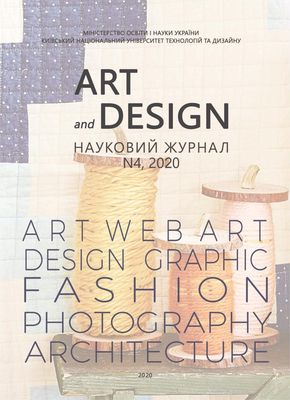DECORATIVE ART AND ECO-DESIGN: PHILOSOPHICAL AND EDUCATIONAL PRINCIPLES OF DEVELOPMENT AND MODERN CHALLENGES
DOI:
https://doi.org/10.30857/2617-0272.2020.4.15Keywords:
philosophical and educational bases, aesthetic, social and cultural values, art and design education, new social demandsAbstract
Purpose. Identification and analysis of philosophical, educational and aesthetic foundations of the development of decorative and applied arts and design in the context of new socio-cultural challenges. Methodology. It is based on a systematic approach that synthesizes the methodological principles of related sciences: art history, philosophy, aesthetics, pedagogy with universal for these sciences methods of historical, typological and comparative analysis. Results. Basic philosophical and aesthetic origins of the phenomenon of decorative and applied art in the context of art and related design education, as well as the bank of basic ideas and principles of its progress in the time continuum are determined. There also have been traces social and cultural values acquired over the centuries, relevant for different historical periods and modern challenges, facing the art and education sphere. Scientific novelty. Determining of the philosophical and aesthetic principles of the functioning of decorative and applied arts in line with art and design education, its timeless universal social and cultural values. Practical significance. The research will contribute to the formation of a deep, philosophical and aesthetic level of worldview perception of the phenomenon of decorative and applied arts, art and design education, the development of guidelines for the implementation and design of new creative ideas in art, education and eco design

